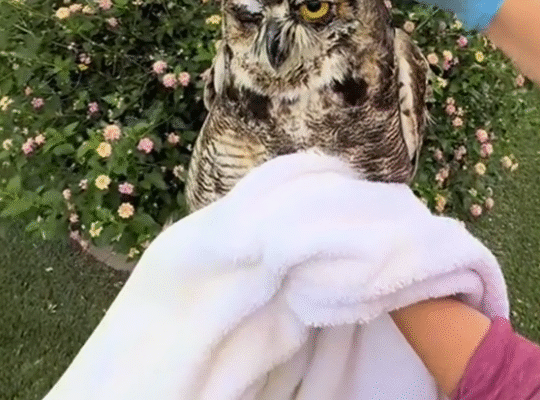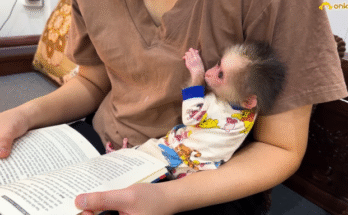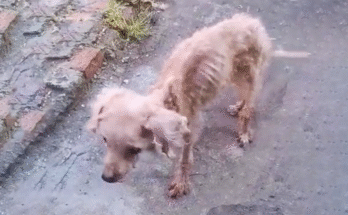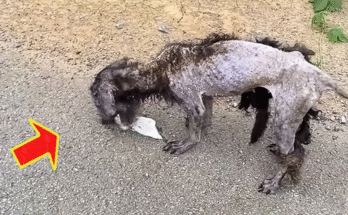In the early morning stillness, when most people were still asleep and the world hadn’t yet burst into the noise of daily life, Sarah went out for her usual walk along the edge of the forest. Living on the outskirts of a small rural town, she often found peace wandering the narrow trails that wound past farms, trees, and fields. But this particular morning, her quiet routine would turn into a rescue mission she would never forget.
As she walked along a worn wooden fence that separated a stretch of farmland from the woods, something unusual caught her eye. At first, she thought it was just a bundle of leaves or maybe a bag blown by the wind. But when she got closer, she stopped in her tracks.
There, entangled in the fence wire, was a large bird — an owl. Its wings were spread awkwardly, and its head hung low, barely moving. The feathers around one of its wings and body were tangled in the wire, and its talons were gripping nothing but air. The poor creature looked exhausted, frightened, and hurt.
Sarah’s heart clenched.
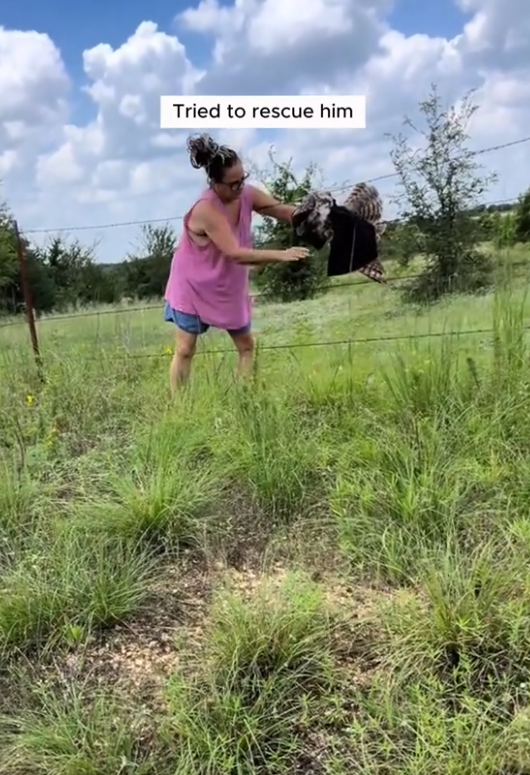
“Oh no… you poor thing,” she whispered, taking cautious steps toward it.
The owl’s eyes opened slowly, and even in its pain, it gave a soft hiss — a warning, a sign that it was still alert despite everything. Sarah could see that it was a barred owl, with beautifully mottled brown and white feathers, and hauntingly round, dark eyes. Its sharp beak and talons reminded her that this was still a wild animal, capable of defending itself, even while injured.
Sarah knew she had to help, but she also knew that one wrong move could make things worse — for the owl and for herself. She gently backed away and called her neighbor, Tom, who volunteered at a local wildlife rescue center. Within ten minutes, he arrived with gloves, a soft towel, and a pet carrier.
Together, they assessed the situation.
“It’s lucky you found her,” Tom said, his voice low. “She wouldn’t have lasted much longer. Looks like she’s been here all night. Probably swooped down after prey and got caught mid-flight.”
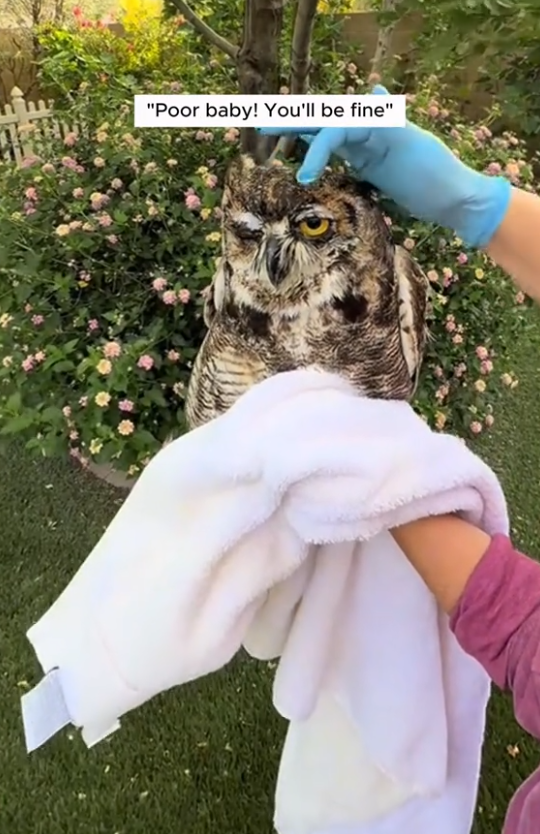
Tom slowly moved closer, talking in soothing tones to the owl while slipping on thick leather gloves. Sarah held the towel, ready to wrap the owl once it was freed. It took several minutes of delicate work to untangle the wire without damaging the feathers further. The owl flinched a few times, and her breathing was shallow and fast, but she didn’t lash out.
Finally, with one last careful snip of wire, the bird came free.
Wrapped in the towel, the owl barely moved. Sarah gently placed her into the pet carrier, and Tom locked the door. The bird was quiet now, her eyes closing slightly as if relieved to be safe.
“I’ll take her to the center,” Tom said. “She’s got some feather damage and probably bruising. We’ll get her checked by the vet.”
Sarah nodded, watching the carrier with a mix of worry and hope.
“Can I visit her?” she asked.
“Of course,” he smiled. “She’s your rescue, after all.”
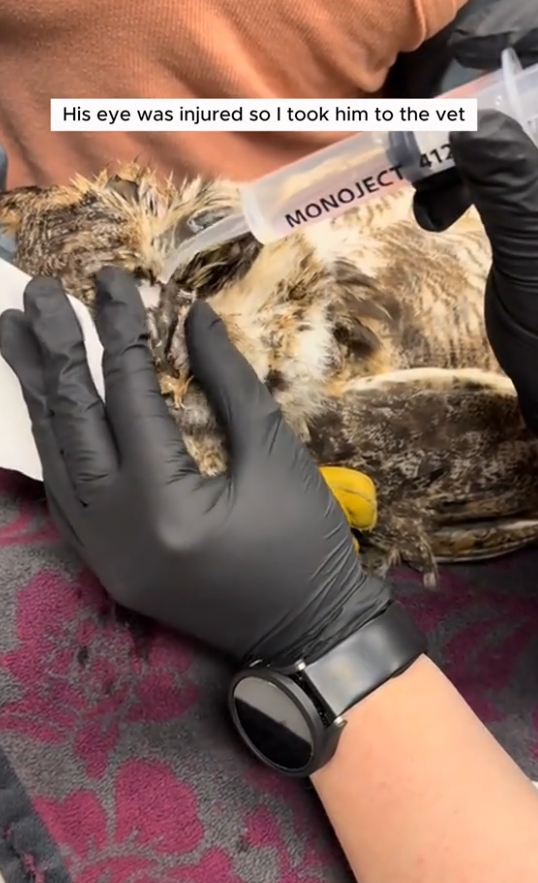
At the wildlife center, the owl was examined by a veterinarian who confirmed that there were no broken bones, only feather damage, dehydration, and stress. She was kept in a quiet enclosure where she could rest and heal. Sarah visited every few days, watching through the glass as the owl slowly regained strength. She was always amazed at the bird’s silent beauty — the way she turned her head, the depth of her gaze, and the calm dignity she carried even while vulnerable.
The rescue team named the owl “Willow,” after the nearby trees that shaded the fence where she had been found.
Over the following weeks, Willow was given the best care — nutritious food, a safe place to recover, and eventually, access to a flight enclosure where she could stretch her wings again. Sarah watched one day as Willow took her first full flight across the long enclosure, and tears filled her eyes.
“She’s almost ready,” one of the caretakers said.
Sarah smiled, her heart full.
Finally, the day came when Willow was strong enough to return to the wild.
The rescue team decided to release her not far from where she was found. Sarah was invited to be part of the release, and she stood in the same field near the fence, now free of wire, with the evening sun casting long shadows across the grass.
Tom carried the carrier into the field and opened the door. For a moment, Willow stayed still, blinking in the soft light. Then, with a powerful leap and a few graceful flaps, she soared into the sky.
Sarah gasped, watching her glide into the forest, her wings cutting through the air with silent precision. The owl didn’t look back — she didn’t need to. She was home.
More Than Just a Rescue
What Sarah did that morning wasn’t just an act of kindness — it was a testament to compassion, attentiveness, and respect for life. Many people might have walked by that fence and dismissed what they saw. But Sarah stopped. She looked closely. And she acted.
For Willow, that small decision meant everything.
In the days after the release, Sarah often thought of the owl. On her morning walks, she would look up into the trees, wondering if Willow might be watching from above. The forest, once a quiet background to her routine, now felt more alive — as if it carried a secret connection between her and the majestic bird she had helped save.
A Message to Us All
This story reminds us that sometimes, the world gives us quiet chances to be heroes. They don’t come with applause or cameras — they come with mud on our shoes, the sound of flapping wings, or a frightened cry in the distance. Sarah wasn’t a wildlife expert. She didn’t have special tools. She just cared. And that made all the difference.
Every creature, big or small, deserves a chance to be seen, helped, and set free. And sometimes, it takes just one person to change everything — with open eyes, open hands, and an open heart.
